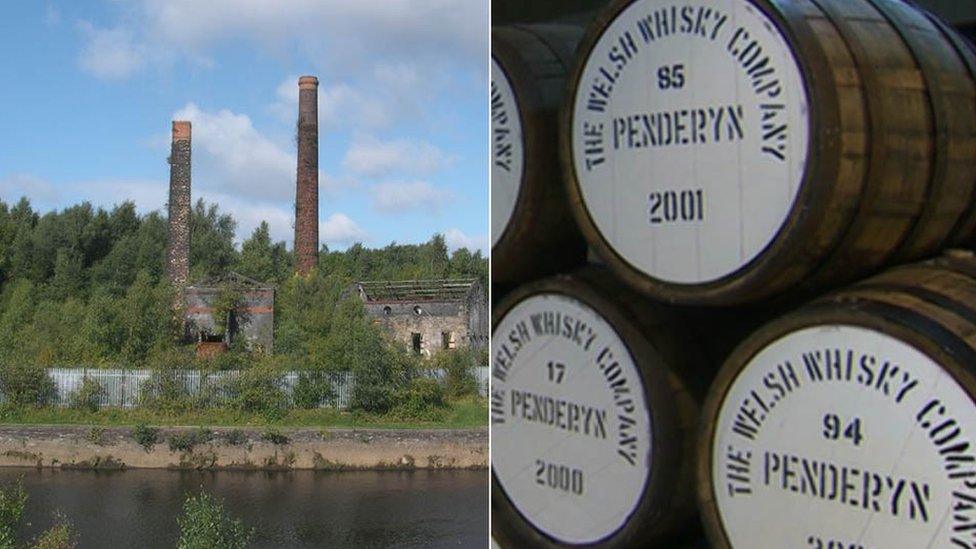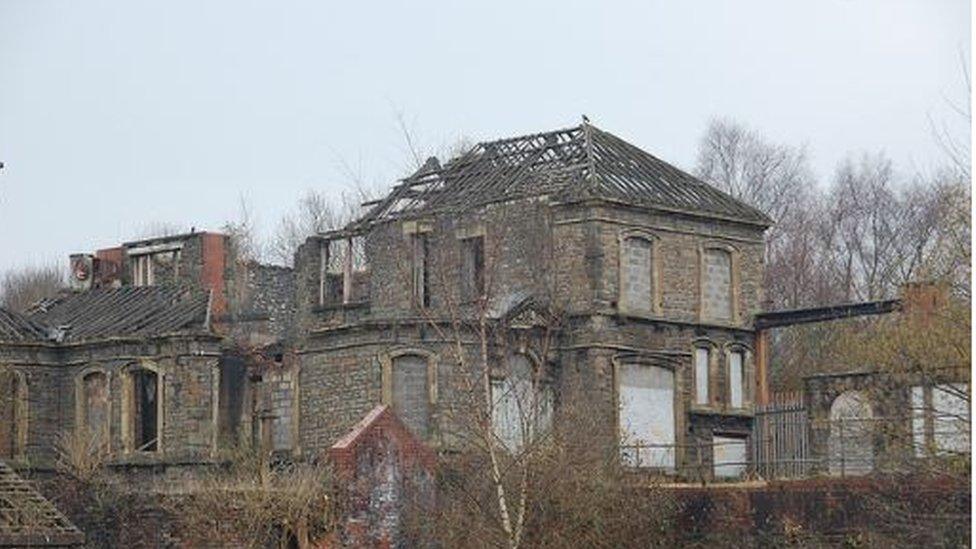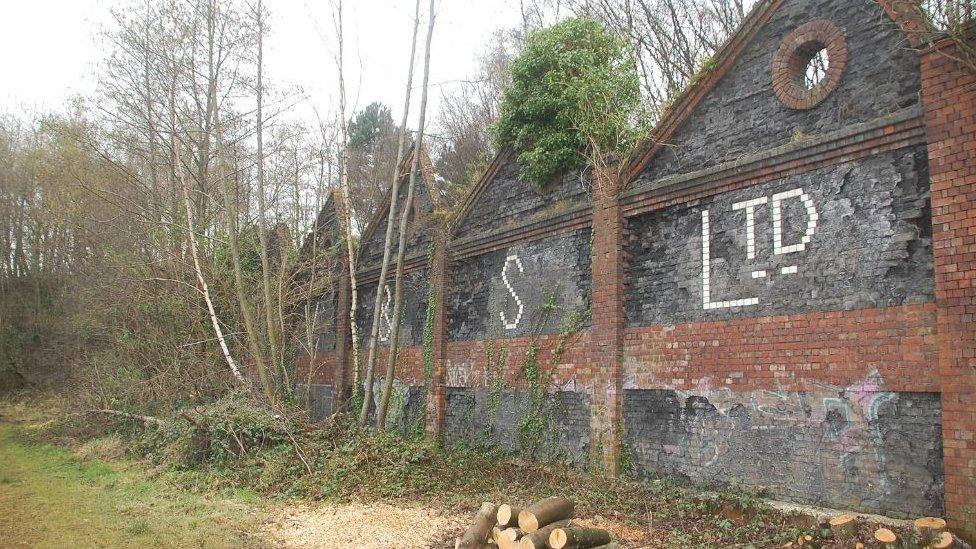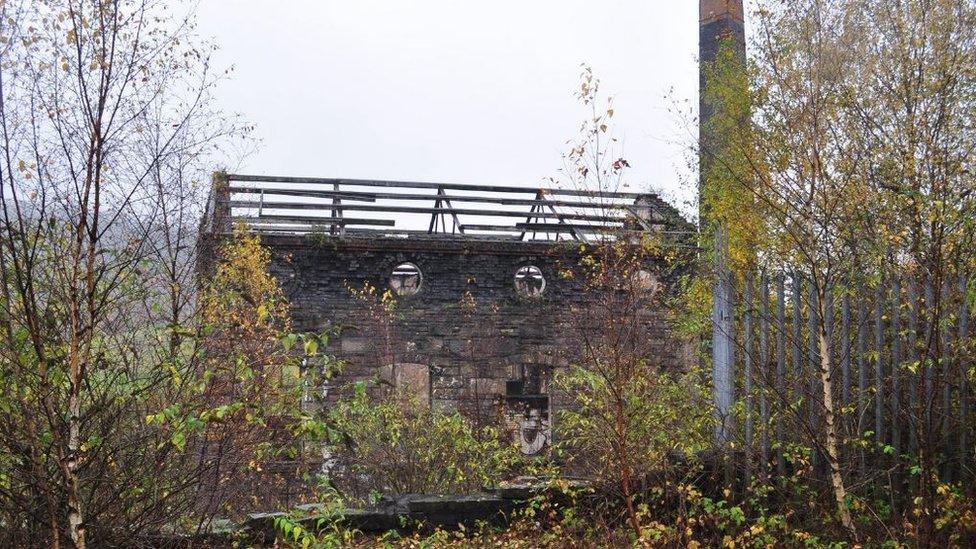Penderyn Whisky plan for former Hafod Morfa copperworks
- Published

Penderyn Distillery could take up tenancy at the Hafod Morfa Copperworks
Experts breathing new life into Swansea's historical Hafod Morfa Copperworks are raising a glass to the news Penderyn Distillery could be its new tenants.
The plans for a new production facility, as well as a visitor centre, are part of a £3.75m Heritage Lottery Fund bid which cleared its first hurdle this week.
CU@Swansea, a partnership between the council and Swansea University, has been working since 2010 to preserve the buildings and heritage of the Grade II-listed works.
It dominated the world copper market for 150 years, but has lain derelict since 1980.
If the bid is successful, the Penderyn site would be the centrepiece of the Tawe Corridor regeneration strategy, along with riverside homes, restaurants and water sports facilities.
The proposed visitor centre would not only give tourists a chance to sample Penderyn's Welsh whisky but would also showcase CU@Swansea's on-going preservation and interpretation work.
Swansea council leader Rob Stewart said: "This plan, with the iconic Penderyn international brand at its heart, will regenerate the site and reinvigorate the riverfront, looking to the future while celebrating our rich heritage.
"Building on the conservation work already done on site, this scheme will also attract many thousands of visitors, open up jobs and further improve a local tourism industry that's now worth more than £400m a year to Swansea's economy."

Hafod Copperworks was opened by Cornishman John Vivian in 1810.
Although the copper ore was mined from Cornwall - and latterly South America, when production outstripped Cornish reserves - it was more economical to ship it to the south Wales coalfields.
About 3-5 tonnes (6,600-11,000lb) of coal were needed to smelt one tonne (2,200lb) of copper.
By 1883 there were a dozen works in the lower Tawe Valley alone and Swansea supplied up to a third of the world's copper.
It was used in construction, in railway engines, for plumbing and by many industries including brewing and distillation.
The proposed Penderyn distillery plans to use copper equipment in recognition of this heritage.
By the turn of the 20th Century it is thought as many as two-thirds of Swansea's population were dependent on copper for their livelihoods and it had made the town's "Copper King" dynasties, such as the Vivians, fantastically wealthy.
'Sulphurous fumes'
But as Prof Louise Miskell - one of the Swansea University team working on the project - explained, it all came at a cost.
"As anyone who came to Swansea by train in the '60s and '70s will recall, the sulphurous fumes from the copperworks caused enormous environmental damage to the landscape and river.
"From the earliest days, the Vivians were fighting lawsuits from local farmers who blamed them for ruining their crops and livestock, but they had the lawyers to wriggle out of most, so it was only in recent times that the environment has begun to be restored."
Nevertheless, despite this devastation, Prof Miskell believes Swansea's copper legacy was by no means all bad.

Swansea University and Swansea council have carried out works to preserve the copperworks

"The environmental damage was terrible in places, but Swansea benefited in so many other ways.
"You could say Swansea was made from copper; economically, culturally, most of what we enjoy about the city today has its roots in copper money.
"But the point is - good and bad - it is vital that we use projects such as this to remember where we have come from and the industries that shaped us."
As demand for copper declined and other countries began producing it more cheaply, Hafod merged with neighbours Morfa in 1924, to create the current 12.5-acre (five-hectare) site on the west bank of the Tawe.
However, by World War Two almost all smelting had ceased, and the last rolling mill at the works closed in 1980.
CU@Swansea has now been awarded a £189,600 development grant to produce a more detailed bid to the Heritage Lottery Fund.
- Published13 March 2016

- Published20 December 2012
